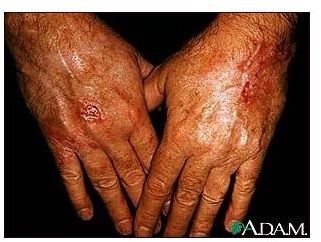How to Prevent Skin Cancer: Learn Tips for Preventing Skin Cancer
Skin Cancer

A little sunlight is good for our bodies by boosting vitamin D levels and can even help prevent a number of diseases, including skin cancer. However, too much sun (UVA and UVB rays) can damage the skin and put one at risk of developing skin cancer.
The amount of sunlight one should get depends on a few factors such as skin type, location, and time of the year. Normally, 10-15 minutes a day with your face and hands exposed is sufficient.
People at a higher risk of getting skin cancer normally have fair skin, many freckles, moles, birthmarks, blonde or red hair, light colored eyes, or a family history of skin cancer.
How to Prevent Skin Cancer
Wear tight-woven clothes to keep the sun’s rays from getting through. Wear a hat to protect your face.
Protect yourself on sunny and cloudy days. 60-80% of UVA and UVB rays can get through the clouds.
Stay in the shade to help prevent skin cancer.
Sun rays are at its strongest from 11 a.m. to 4 p.m.
When you are unable to avoid the sun, use a natural sunscreen to protect your skin from damaging rays.
Avoid tanning beds and sun lamps. Both can put one at a higher risk of getting skin cancer.
Drink green tea, preferably 4-5 cups per day. According to the Archives of Dermatology (a journal by the American Medical Association), polyphenols (a substance in green tea) can help prevent skin cancer and may even be able to stop cancerous growths by limiting blood vessels around them, thus causing the growths to starve.
Self Examinations
Look for the following symptoms of skin cancer:
- a mole that doesn’t look the same on each side
- a mole with jagged or blurry edges
- a mole that has a change in color
- a mole bigger than 1/4 inch in diameter
- a mole with a rough surface
- a mole raised above the skin
- a fast growing mole
- a mole that itches
- a sore that won’t heal
- a crusted or scaly growth on the skin.
Examine your body about once a month, from head to toe. Early detection is the best way to help prevent skin cancer from becoming too serious.
Disclaimer
Please read this disclaimer regarding the information contained within this article.